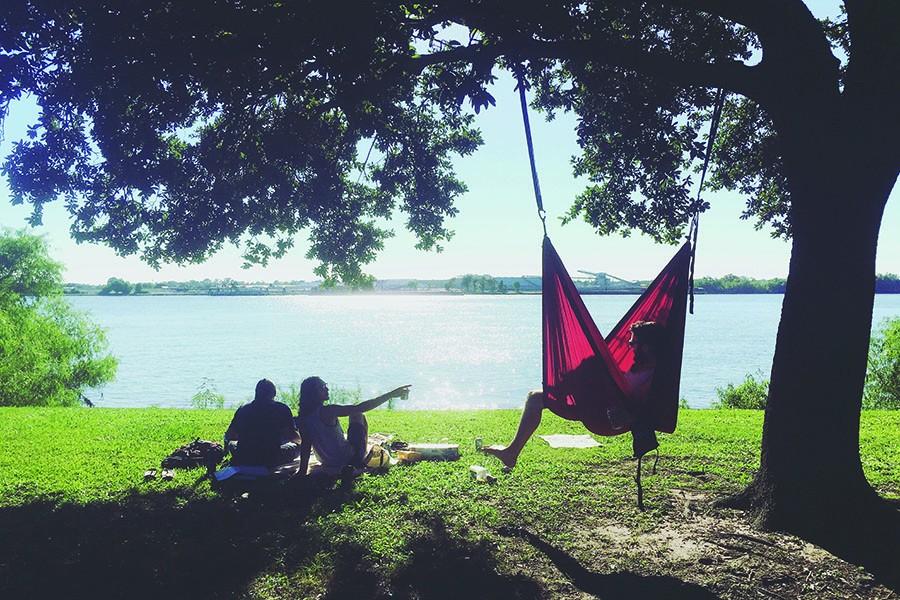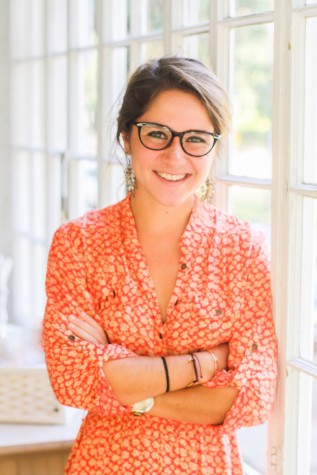Youth sports complex at The Fly put on hold
March 4, 2016
Students might lose their favorite picnic spot if the Audubon Commission moves forward with the development of a new multi-purpose complex at the Fly.
News about a $4 million signed agreement between the Audubon Commission and the Carrollton Boosters gained the attention of park visitors when the nonprofit tried to remove an old bathroom building from the site’s footprint. As soon as the construction plan made headlines, opponents of the proposed complex created an activism page on Facebook called ‘Save the Fly’ to provide community members with information about the proposed 2.5-acre development.
When District B City Councilwoman, LaToya Cantrell, discussed the project’s details with her community development committee, she expressed serious concerns about the small public demonstration involved in discussing the use of the land.
According to Katie Smith, director of public relations at the Audubon Nature Institute, the Carrollton Boosters project, which was funded by private donations from New Orleans Saints and Pelicans owners Tom and Gayle Benson, New Orleans Saints quarterback Drew Brees, Tabasco, Iberia Bank and other corporations, has been placed on hold until they are able to come up with ways to improve the development plan.
“Our number one goal is to create a rewarding experience for all families in New Orleans.” Smith said. “We are meeting with community groups to develop the best plan to balance green space and recreation for children in the area.”
Smith said that the commission voted on the commercial entity agreement with Carrollton Boosters on April 30, 2015 during an open meeting. She added that the best way for the community to learn about Audubon projects is to attend public Audubon Commission meetings.
While the Audubon Commission did hold a public meeting about the development, Jeffrey Thomas, local attorney and resident of the Carrollton neighborhood, said that there should been more active effort to get public opinion on the matter.
“A public meeting with 24 commissioners that is put in a small notice in the paper is not the same as being more deliberately and purposeful with public participation,” Thomas said. “Now that a large portion of the public has been heard from, it is timely to explore the alternatives. It’s not about the Carrollton Boosters’ or the value of soccer, or the business model that they used to finance recreational activities. It’s about whether it should be done on that piece of earth that is so rare and special because it doesn’t exist anywhere else like that in the city.”
Thomas, whose legal background focuses in environmental law and public policy, said that in the city of New Orleans, there is little open space along the Mississippi River because most of is given to ports or concreted over promenades downtown. He said he believes any decision involving the use of that land, particularly uses that would have a generational length, should be brought before the public for a fuller conversation about the highest and best use of that land.
“It thinks this is a very simple conversation,” Thomas said. “Too often these debates variant to the the conspiracy, but I see it very simply. There is a governmental entity that has the authority to control and make decisions for the Audubon land and that is the Audubon Commission. It is in the city charter and it was given maximum authority to do that. The question here is: what is the best way to utilize that authority?”
Corinne Marcus, board director of Carrollton Boosters, said the first-class multi-purpose field has been placed on hold because of all the uproar and miscommunication brought up by different outlets.
“We are working with the Audubon Commission and Audubon Institute to listen to everybody’s concern and find the best way to move forward,” Marcus said. “We were never, in our contending, trying to take over all the Fly like some of the misinformation out there is stating.”
Marcus said that the non-profit sports organization, which is run by 15 volunteers, wants to create a recreational program where kids are able to practice sports regardless of their ability to pay.
“We just thought it was a great win for the kids,” Marcus said. “People have said ‘Why don’t you put it on the Westbank?,’ but Carrollton Boosters is just a small organization run by 15 volunteers, so to think we could run any kind of facility wherever, it just wouldn’t work.”
Michael Nius, one of the founders of the activist group ‘Save the Fly’, said they are working with the Audubon Committee and Ron Forman and John Payne, who are the Carrollton Booster parents that started the project, to try to to find a better solution for everyone.
“When the plan came out, there was a tremendous reaction from neighborhood groups when they found out about this because it takes away the major spot were people come to picnic, hangout and watch the activity in the river.” Nius said. “There was quite a rebellion towards the idea, which led us to collect about 9,000 signatures protesting against the construction.”
According to Thomas, because the public does not have access to the agreement between Audubon Commission and Carrollton Boosters and that there is a public uproar about what is happening to the park, said more open conversation is essential.
“If the public is giving away its land for an indefinite period of time to be used by an organization that has a very particular business model for how it will use it, then it has to be something that the fuller public understands. These raises all the right questions, that we don’t have answers for them suggest the problem,” Thomas said.










Matt Ellis • Mar 5, 2016 at 12:54 am
Thanks for writing this article. I wanted to mention that while just the field itself would be close to 2 acres, the addl parking lots, structures and development as a whole for the area that would be leveling is closer to 6.5 acres.
Secondly I find it interesting for Carrollton to refer to themselves as “a small organization run by 15 volunteers.” While I’m not questioning the literal truth of that statement, they have an special relationship with the Audubon Commision and members of the Audubon Nature institute board. For a small organization like that to have 5 million handed to them to develop on this special piece of land where they already have such an overwhelming presence is a good way of illustrating how much reform is needed within the Audubon Commision and their arrangement with the Boosters.